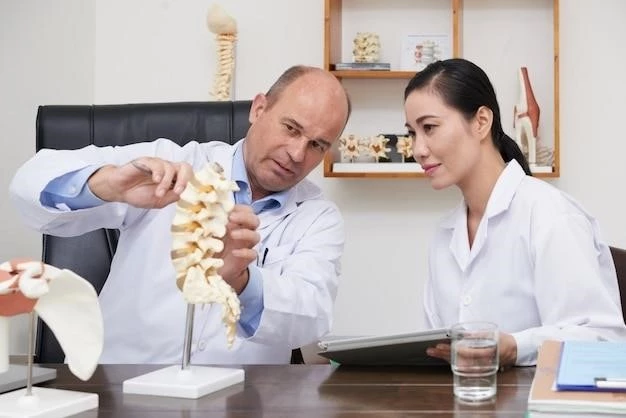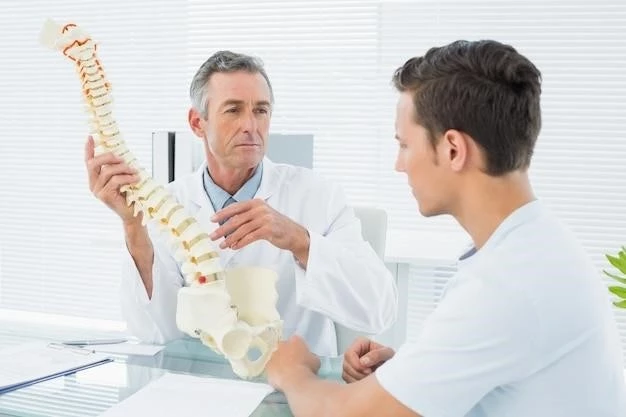Introduction
The Osteolysis Syndrome Recessive includes rare skeletal dysplasias such as Multicentric Osteolysis Nodulosis and Arthropathy (MONA) and Acro-Osteolysis. The inherited nature of these conditions often leads to progressive skeletal abnormalities.
Overview of Osteolysis Syndrome Recessive
The Osteolysis Syndrome Recessive encompasses rare skeletal dysplasias such as Multicentric Osteolysis Nodulosis and Arthropathy (MONA) and Acro-Osteolysis. These conditions are characterized by progressive skeletal abnormalities and can have varying genetic inheritance patterns. Treatment and management of these conditions often require a multidisciplinary approach for better patient outcomes.
Multicentric Osteolysis Nodulosis and Arthropathy (MONA)
Multicentric Osteolysis Nodulosis and Arthropathy (MONA) is a rare skeletal dysplasia involving progressive osteolysis, subcutaneous nodules, and arthropathy. Genetic variants contribute to the autosomal recessive inheritance pattern of this condition.
Characteristics and Manifestations
Patients with Multicentric Osteolysis Nodulosis and Arthropathy (MONA) present with progressive osteolysis, subcutaneous nodules on palms and soles, arthropathy, coarse facies, pigmented skin lesions, cardiac defects, and varying degrees of osteoporosis. The condition is autosomal recessive and can lead to joint contractures, pain, and stiffness.
Genetic Basis and Inheritance Patterns
Multicentric Osteolysis Nodulosis and Arthropathy (MONA) exhibit an autosomal recessive inheritance pattern often linked to variants in the LMNA gene. These genetic mutations play a crucial role in the clinical manifestations and progression of the disease.
Acro-Osteolysis
Acro-Osteolysis refers to the erosion and degeneration of bones in the distal phalanges of the hands or feet. This condition can be associated with underlying inflammatory conditions or genetic disorders, leading to bone abnormalities in the extremities.
Definition and Categories
Acro-Osteolysis refers to the pathological condition characterized by bone erosion in the distal phalanges of the hands or feet. It is categorized into terminal tuft, midshaft, or mixed types based on the location and extent of bone degeneration.

Types of Hereditary Multicentric Osteolysis
Hereditary Multicentric Osteolysis encompasses different types including those with dominant or recessive transmission patterns, nonhereditary forms, and distinct syndromes such as Gorham-Stout syndrome and Winchester syndrome.
Differentiation of Types
Distinct types of Hereditary Multicentric Osteolysis include those with dominant or recessive transmission, nonhereditary forms, and specific syndromes such as Gorham-Stout syndrome and Winchester syndrome. Each type presents with unique clinical features and inheritance patterns, aiding in accurate diagnosis and management strategies.

Diagnosis and Imaging of Osteolysis Syndromes
Accurate diagnosis of Osteolysis Syndrome Recessive involves utilizing radiological imaging to recognize progressive osteolysis patterns and differentiate from similar conditions. Recognition of specific bone abnormalities and distinct manifestations aids in addressing diagnostic challenges and facilitating appropriate treatment approaches.
Radiological Recognition
Radiological imaging plays a crucial role in recognizing the patterns of osteolysis in osteolysis syndromes. It aids in differentiating between various skeletal abnormalities and assists in accurate diagnosis through the identification of specific bone changes and manifestations associated with these conditions.
Differential Diagnosis Challenges
Challenges in the differential diagnosis of Osteolysis Syndromes arise due to the overlapping clinical features with other bone and joint disorders, necessitating a comprehensive evaluation to differentiate these conditions accurately; Balancing the consideration of genetic factors, radiological findings, and patient history is crucial in overcoming these diagnostic challenges.
Treatment and Management Approaches
Treatment approaches for Osteolysis Syndrome Recessive involve strategies aimed at managing symptoms, improving quality of life, and addressing skeletal abnormalities through a multidisciplinary approach. Current therapeutic strategies focus on alleviating pain, managing complications, and providing long-term care to enhance patient outcomes.
Current Therapeutic Strategies
The current therapeutic strategies for Osteolysis Syndrome Recessive focus on symptom management, improving patients’ quality of life, and addressing skeletal abnormalities using a multidisciplinary approach. These approaches aim to alleviate pain, manage complications, and provide long-term care for optimal patient outcomes.
Prognosis and Long-Term Care
The prognosis and long-term care for individuals with Osteolysis Syndrome Recessive involve comprehensive monitoring, symptom management, and addressing potential complications to ensure optimal quality of life. Long-term care strategies focus on multidisciplinary approaches to provide ongoing support and interventions tailored to the individual’s needs, with regular follow-ups and assessments to monitor disease progression.
Autosomal Recessive Distal Osteolysis Syndrome
The Autosomal Recessive Distal Osteolysis Syndrome is characterized by early-onset severe resorption of hands and feet bones, often affecting the distal and middle phalanges. Consanguinity may play a role in the inheritance pattern and manifestations of this syndrome.
Disease Definition and Characteristics
The Autosomal Recessive Distal Osteolysis Syndrome is an early-onset condition characterized by severe resorption of the hands and feet bones, leading to the absence of distal and middle phalanges. This syndrome, which may exhibit consanguinity-linked inheritance patterns, can also manifest features such as distal muscular hypertrophy, flexion contractures, and additional clinical observations.
Genetic Mutations and Molecular Basis
The Autosomal Recessive Distal Osteolysis Syndrome is associated with genetic mutations, particularly in the LMNA gene, linked to the manifestation and progression of the disease. These variants in the LMNA gene play a significant role in the clinical features observed in individuals affected by this syndrome.
LMNA Gene Variants and Clinical Correlations
The LMNA gene variants associated with the Autosomal Recessive Distal Osteolysis Syndrome have clinical correlations that impact the disease’s phenotypic expression and progression. These genetic variations in the LMNA gene are instrumental in understanding the pathogenesis and clinical manifestations of this syndrome.
Winchester Syndrome
Winchester Syndrome is a rare autosomal recessive disorder leading to multicentric osteolysis. Manifestations may include painful swelling in hands, fingers, wrists, and ankles, typically presenting by the end of the first year.
Clinical Presentation and Onset
Individuals with Winchester Syndrome typically experience the onset of the condition towards the end of the first year of life, presenting with symmetrical painful swelling in the hands, fingers, wrists, and ankles. This rare autosomal recessive disorder may manifest with additional clinical features related to multicentric osteolysis, contributing to the distinctive phenotypic expression of the syndrome.
Research and Advancements in Osteolysis Syndromes
Ongoing research and advancements in Osteolysis Syndromes aim to enhance understanding, diagnostics, and treatment approaches for these rare skeletal dysplasias. Recent studies focus on genetic mutations, molecular pathways, and potential therapeutic interventions to improve patient outcomes and quality of life.
Recent Studies and Findings
Research on Osteolysis Syndromes has focused on genetic mutations, molecular pathways, and potential therapeutic interventions. Recent studies aim to enhance diagnostic accuracy, treatment efficacy, and patient outcomes by investigating the pathogenesis and specific gene variants associated with these rare skeletal dysplasias.
Conclusion and Future Directions
In conclusion, Osteolysis Syndromes pose complex challenges due to their rarity and diverse clinical manifestations. Future directions in research aim to deepen the understanding of genetic mutations, advance diagnostic methods, and develop targeted therapeutic interventions for improved management of these conditions. Collaborative efforts between clinicians, researchers, and genetic counselors are pivotal in enhancing patient care and outcomes in the realm of rare skeletal dysplasias.
